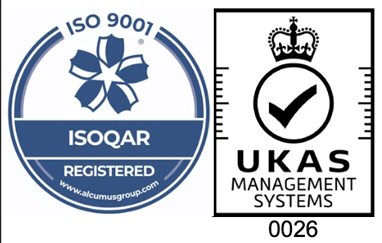How to Expand the Lifespan of Your Caravan
16th May, 2025
As summer holiday season approaches, caravan owners are gearing up to hit the road and park up on pitches across the country. The British weather is unpredictable at this time of year, so to ensure you’re getting the absolute best use out of your beloved holiday home, it’s important to check door seals and roof seals of your caravan.
As summer holiday season approaches, caravan owners are gearing up to hit the road and park up on pitches across the country. The British weather is unpredictable at this time of year, so to ensure you’re getting the absolute best use out of your beloved holiday home, it’s important to check door seals and roof seals of your caravan. These seals protect from the elements by acting as barriers, preventing water and weather damage, extending the lifespan of your caravan.
This practical guide will discuss the best ways to choose, maintain and replace caravan seals to maximise durability and give you peace of mind on holiday.
Worn-out seals
As winter ends and the warmer months begin, now is a crucial time to inspect the seals on your caravan. The colder weather can cause seals to shrink or harden, ultimately compromising their effectiveness, so checking seals around the door, windows, roof vents, gas and utility ports – as well as other areas on your caravan – should be top of your van to-do list.
Some signs of worn caravan seals include cracks, tears or gaps in the rubber. Otherwise, from inside your caravan, you may notice water leaks, draughts, excessive noise from outdoors or difficulty when opening and closing doors, which could suggest the seals are worn and need replacing.
Damage from worn-out rubber seals, particularly water damage, can cause dampness inside the caravan, which can cause mould growth, leading to unpleasant odours and potential health risks. Dust and debris can also enter your caravan through worn-out seals, creating an unpleasant living environment, and nobody wants to spend their well-earned holiday in an uncomfortable caravan.
Impact of weather conditions
Caravans are exposed to varied weather conditions year-round, regardless of whether you travel with your van in the summer or store it during the winter. Weather conditions, from rain and shine to wind and snow, can all have negative impacts on caravan door seals, and seals elsewhere on the chassis.
Excessive or heavy rain can lead to water damage, potentially resulting in water leaks because of damaged seals. This increases the risk of damage to the structural integrity of the van which requires costly repairs. Heat in summer causes seals to expand and contract, leading to gaps between seal and chassis, and harsh winter temperatures could mean the weight of snow and ice damage the seals. Draughts inside your caravan can increase heating and cooling costs, because the chassis is unable to hold heat or cool air, while condensation can result in mould if excess air filters in the caravan during autumn.
UV-resistant and temperature-tolerant materials
There are certain materials which are more suited for caravan seals because of their strong resistance to UV and high temperatures. One of these materials is Ethylene Propylene Diene Monomer (EPDM).
Widely used in the automotive and construction industries because of its excellent resistance to extreme temperatures and UV rays, EPDM is present in caravan door seals – as well as window seals – meaning that despite exposure to sunlight and extreme temperatures, the seals will remain intact. Using a combination of sponge rubber and solid rubber, both containing EPDM, caravan door seals tend to be effective and durable because of this material. Sponge rubber is particularly effective when forming a seal around window edges and it compresses easily when the window is closed, filling gaps and preventing air from entering the caravan. Meanwhile, solid rubber is dense and robust, so is used more where a long-lasting barrier is needed, like sections of the van that experience less movement. Together, the sponge and solid rubber in EPDM provides your caravan with seals that perform under UV pressure and high temperatures.
How to ensure optimal seal performance
Carrying out routine check-ups on caravan seals is a crucial part of ensuring the seals perform optimally for long periods of time. Seals should be checked every season, since all weather conditions can impact their durability and effectiveness. Plus, regular checks of caravan seals will mean any issues can be identified and resolved before damage becomes too costly.
Cleaning caravan seals regularly also helps to optimise their performance. Using mild soap and water, and avoiding harsh chemicals that may damage the rubber, cleaning the seals maintains their effectiveness.
Applying a seal conditioner afterwards prevents seals from drying out, cracking, and causing further issues.
Replacing damaged seals can be completed by caravan owners themselves depending on the complexity and accessibility of the impacted area. Using a sealant is a temporary, short-term fix for any seal damage and is not a recommended solution. Instead, replacing damaged seals with new ones – like a watertight seal or a bespoke seal for your caravan – will be a better fix and will cause you less problems in the long term.
How Aquaseal Rubber can help you
Ultimately, replacing damaged seals on windows and doors, and sealing caravan roofs if necessary, will extend the lifespan of your caravan and ensure optimal performance of caravan seals.
At Aquaseal Rubber, our team work with a range of materials, including EPDM for caravan seals, and are on hand to discuss your bespoke needs. Contact us today to learn more.


